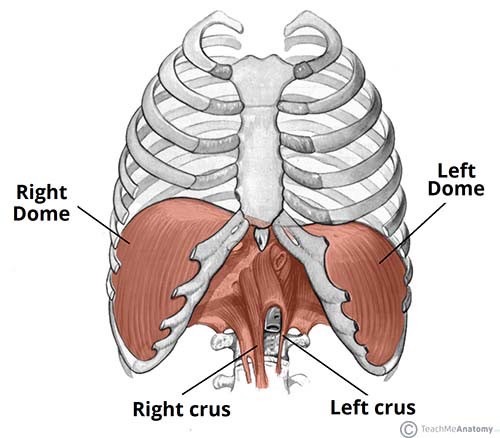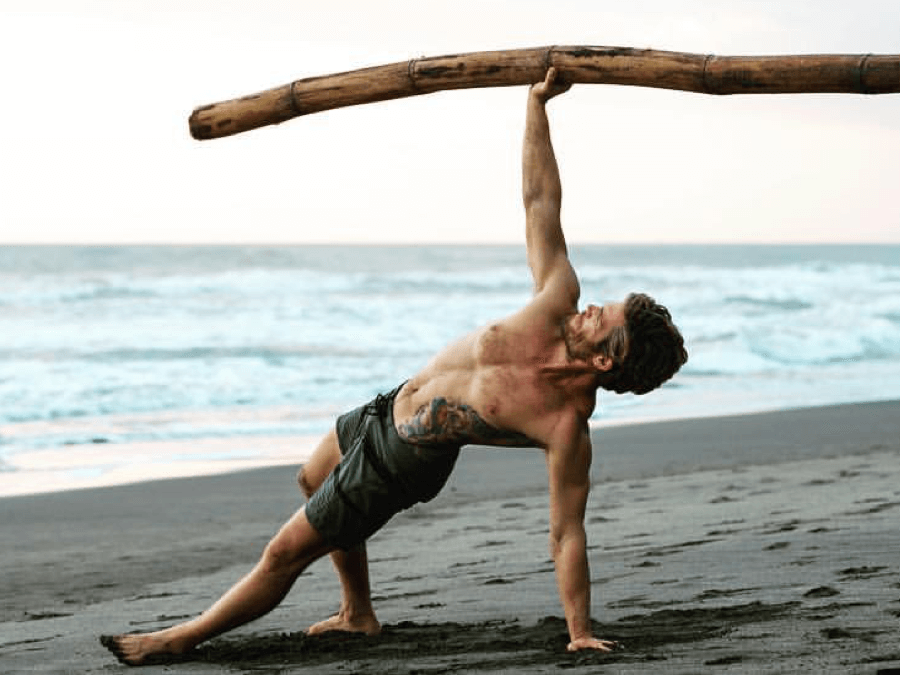SOUPLESSE ET ÉTIREMENTS POUR LES SURFEURS
VOICI LES MEILLEURES FAÇONS DE MIEUX BOUGER, D'AMÉLIORER VOS ÉTIREMENTS ET VOTRE SOUPLESSE
Lisez ceci, et je vous donnerai les détails rapides sur la façon de s'étirer plus efficacement. Pour les personnes qui ne s'étirent pas, voici comment vous pouvez vous lancer efficacement. Les meilleures façons de mieux bouger.
Pourquoi ?... Tu dois te détendre, mec. La plupart des gars de plus de 30 ans, ou ceux qui ont déjà eu des blessures graves, sont probablement trop raides. Le manque de souplesse est un énorme prérequis pour les blessures et la douleur, et cela vaut pour tous les sports athlétiques, surtout le surf.

D'un autre côté, certains d'entre vous sont trop souples ou manquent de force sur toute leur amplitude. Si c'est le cas, vous n'avez pas besoin de vous étirer beaucoup, vous devez devenir plus fort, mais tout le reste s'applique à vous.
VOICI COMMENT TIRER LE MEILLEUR PARTI DE VOS ÉTIREMENTS
- 1) respirer
- 2) le temps ou la durée de l'étirement
- 3 )agressivité de l'étirement... tension 3-6/10
- 4) étirements spécifiques aux articulations, isoler les muscles avant les étirements complets du corps.
- 5) en utilisant des méthodes pour les tissus mous
- 6) se verrouiller avec le mouvement
RESPIRATION
Inspirez la vie. Arrêtez probablement de fumer aussi, mais surtout, apprenez à respirer correctement. La respiration diaphragmatique, également appelée respiration ventrale, est le modèle de respiration physiologiquement "correct". La plupart des gens aujourd'hui sont ce que nous appelons des "respirateurs du cou", ce qui signifie qu'ils n'utilisent pas correctement leur diaphragme pour respirer.

Alors comment cela peut-il avoir une influence sur vos étirements ? Votre respiration est l'un des moyens les plus rapides d'influencer votre système nerveux. Elle peut augmenter les niveaux de stress et de tension, ou aider à les réduire. Si vous essayez de vous étirer et d'aider votre système nerveux à relâcher la tension des groupes musculaires, dans quel état du système nerveux pensez-vous devoir vous trouver ?
Détendu, ou excité ? Plutôt simple, non ? Pendant que vous vous étirez, respirez profondément, de manière détendue et diaphragmatique. La partie diaphragmatique peut demander un peu d'entraînement, mais cela vaut la peine de consacrer du temps à rétablir un schéma respiratoire correct.
Ainsi, lorsque vous vous étirez, respirez dans vos boules, ou l'autre version pour les dames, détendez les épaules et le cou, et respirez lentement, profondément et en rythme. Il ne doit pas s'agir uniquement du mouvement du ventre vers l'extérieur. La respiration doit être tridimensionnelle, avec une expansion latérale et postérieure.
Voici un récapitulatif complet sur la respiration :
COMBIEN DE TEMPS FAUT-IL TENIR UN ÉTIREMENT
Combien de temps devez-vous tenir votre étirement ? 10 secondes ? Deux minutes ? C'est là que la confusion s'installe, avec des personnes du monde du fitness et du yoga qui racontent n'importe quoi.
Malheureusement, la réponse n'est pas tout à fait tranchée, car la durée de la période d'essai de l'UE est de deux ans.

L'étirement dépend de ce que vous essayez d'accomplir, du moment où vous vous étirez et de votre degré de souplesse ou d'inflexibilité.
Il y a beaucoup de science derrière les différentes méthodes, quand les utiliser, comment les utiliser et pour quelle raison. J'aimerais pouvoir vous donner une recette simple, mais elle doit vraiment être adaptée à chaque individu.
Parfois, les gens ont besoin de maintenir un étirement pendant 2 à 3 minutes, tandis que d'autres fois ou d'autres personnes devraient utiliser une méthode d'étirement par contraction/relaxation de 5 secondes, ou toute autre modalité d'étirement.
Ils sont tous deux valables, mais l'essentiel est de les utiliser dans un but précis. Je ne peux donc pas vous donner une réponse simple sans vous avoir d'abord évalué, ainsi que vos objectifs, votre souplesse actuelle et votre historique de blessures.
Ce que je peux faire, c'est vous donner quelques directives simples qui s'appliquent à la plupart des gens.
Si vous êtes une personne très tendue, c'est-à-dire vraiment raide et inflexible, vous devez maintenir les étirements pendant au moins 30 secondes. Et même éventuellement jusqu'à 2 minutes si vous tentez une tension du système fascial et nerveux. Mais attendez... pas nécessairement juste avant de vous entraîner.
Si vous êtes sur le point de vous rendre sur le site surf ou de vous entraîner : ne maintenez pas les étirements pendant de longues périodes, car cela peut "inhiber" la fonction d'un muscle. Utilisez plutôt une méthode d'étirement par contraction et relâchement, ainsi que des mouvements dynamiques permettant à votre corps d'effectuer des gammes de mouvements. Vous voulez préparer votre corps au mouvement, et non pas le ralentir ou empêcher le fonctionnement des muscles.
Avant de vous entraîner ou d'aller sur surf, vous devez vous tourner vers des étirements "dynamiques" qui augmentent activement l'amplitude des mouvements des articulations.
ÉTIREMENTS AGRESSIFS - QUELLE INTENSITÉ D'ÉTIREMENT ?
Respirez simplement, acceptez la douleur, lâchez prise, vous n'êtes pas votre douleur, faites simplement l'expérience, soyez présent..... papillon fluff. J'ai entendu des bêtises de ce genre par le passé, notamment dans des cours de yoga de qualité inférieure.

C'est assez simple. Ne vous étirez pas trop fortement. Pensez à une échelle de douleur de 1 à 10. Étirez-vous jusqu'à un niveau de 4 à 6. Vous devriez être capable de vous détendre à un niveau de 4-6.
Si vous le montez à 9, vous effrayez votre système nerveux. Sachez que votre cerveau et votre système nerveux créent une tension dans le système musculaire. Avec les étirements, vous essayez de changer la façon dont le système nerveux parle au système musculaire.
Les étirements excessifs, l'augmentation du niveau de stress, le fait de faire travailler un muscle à fond pour qu'il se relâche, le fait de serrer la respiration, tout cela n'améliore pas votre souplesse.
Ces signaux d'alarme envoyés au système nerveux stopperont toute amélioration potentielle de la souplesse, car le système nerveux essaie de protéger le corps. Détendez-vous un peu, trouvez votre confortable 4-6barrier, et détendez-vous, c'est une question de peluche de papillon.
ISOLER LES GROUPES MUSCULAIRES AVANT DE PASSER À LA DYNAMIQUE COMPLÈTE
L'une des clés de l'amélioration de la souplesse consiste à trouver les muscles qui doivent être spécifiquement "allongés" ou relâchés. Prenons l'exemple d'un mouvement de flexion avant avec les orteils. Si vos ischio-jambiers sont très tendus, ils vont empêcher votre bassin de rouler vers l'avant (flexion pelvienne) lorsque vous essayez de toucher vos orteils.
Les ischio-jambiers s'attachent à l'arrière du bassin au niveau de la tubérosité ischiatique, et s'ils sont vraiment tendus, ils ancrent le bassin. Cela empêche le bassin de rouler vers l'avant en flexion lorsque vous essayez de toucher vos orteils. Comme le bassin ne peut pas bouger, vous êtes obligé de fléchir excessivement la colonne vertébrale ou de l'arrondir vers l'avant.
C'est essentiellement une mauvaise chose, car vos ischio-jambiers tendus vous obligent à faire un mouvement excessif dans votre colonne lombaire, car c'est la seule façon de vous pencher en avant.
Ainsi, si vous êtes dans un cours de yoga et qu'on vous dit de ne faire qu'un avec vous-même et de relâcher la tension dans la lumière et l'univers, vous n'allongerez pas vos ischio-jambiers, vous roulerez simplement vers l'avant de la colonne vertébrale dans une flexion lombaire excessive.
La clé serait donc de trouver un étirement qui isole les ischio-jambiers, de les allonger, puis de travailler les contacts avec les orteils. Vous comprenez ? Vous devez trouver les muscles qui sont spécifiquement tendus, essayer de réduire la tension, puis travailler sur des étirements du corps entier.
***CAVEAT, il y a toujours des réserves et des exceptions pour le corps. Parfois, un groupe de muscles spécifique est exceptionnellement tendu parce que le système nerveux tente de protéger une articulation ou un nerf, d'assurer la stabilité ou d'éviter la douleur. C'est là que certains praticiens qualifiés interviennent. Nous y reviendrons plus tard.
Isolation musculaire. La plupart des exercices de yoga ou d'étirement dynamique sautent cette étape cruciale. L'objectif est de procéder à un étirement dynamique de tout le corps, mais il faut d'abord isoler et étirer un muscle spécifique qui peut désaligner une articulation.
Isolez les muscles, étirez-les, puis faites des mouvements ninja. Un exemple rapide, je suis toujours tendu dans les quadriceps et les fléchisseurs de la hanche en raison de certains problèmes posturaux et de base que j'ai.
Avant de m'entraîner, je fais des étirements spécifiques des quadriceps et des fléchisseurs de la hanche, puis des étirements dynamiques de tout le corps. Clair ?... J'espère que oui.
TOUJOURS SERRÉ ?... SE FAIRE ÉVALUER
Voici la mise en garde expliquée, brièvement. Plus nous en apprenons sur la connexion cerveau/corps, plus nous réalisons que c'est le cerveau (système nerveux) qui régule la tension musculaire.
Si un muscle spécifique est toujours tendu, il essaie peut-être de protéger quelque chose. C'est très fréquent avec des ischio-jambiers trop tendus. Un autre exemple est le petit pec et les problèmes d'épaule.
Peut-être que votre cerveau tend toujours ce muscle pour se protéger, ou pour protéger une articulation, ou pour assurer la stabilité. Découvrez pourquoi. Travaillez avec un bon praticien. Il y a aussi des gens qui sont tout simplement très tendus, et pour ceux-là, il faut faire des efforts pour se détendre.
MÉTHODES POUR LES TISSUS MOUS
Balles de tennis, rouleaux en mousse, queues de tigre, balles à pointes, fil de soie vaudou, tout ce qui peut titiller votre imagination. Voici un article complet sur les petites balles vertes et les rouleaux en mousse. Améliorer la souplesse des surfeurs et vaincre la douleur
MOUVEMENT DES TRAINS
Les étirements sont excellents et parfois absolument essentiels, mais comme pour toute chose, ils peuvent être exagérés ou trop compliqués. La clé est de progresser vers le mouvement.
Oui, vous venez d'étirer vos adducteurs, mais avez-vous montré à votre système nerveux que vous pouvez ensuite vous déplacer en toute sécurité avec cette nouvelle amplitude de mouvement ? Pouvez-vous être fort dans cette nouvelle amplitude de mouvement ? C'est la clé.

Entraînez l'amplitude de mouvement nouvellement acquise. Voici un exemple rapide : Les adducteurs sont un groupe de muscles situés à l'intérieur de votre jambe. Ils peuvent limiter la distance que votre jambe peut parcourir vers le côté (latéralement), ce que nous appelons l'abduction de la hanche. Les adducteurs ont tendance à être très raides et tendus chez de nombreuses personnes. Faisons un rouleau de mousse et essayons de les étirer ou de les "mobiliser".
Vous venez probablement d'améliorer votre capacité à déplacer cette hanche en abduction (ce qui est en fait très important pour nous, surfeurs). Maintenant, vous devez apprendre à votre cerveau / corps à utiliser cette nouvelle gamme, et à être fort dans cette nouvelle gamme.
Faites des mouvements de câble dynamiques, en vous concentrant sur les jambes larges et sur une fente latérale, en déplaçant le poids d'une hanche à l'autre, en utilisant le tronc et en apprenant à votre cerveau que le corps et les articulations sont sûrs dans ces nouvelles plages. Votre corps s'adaptera plus rapidement de cette manière.
ALORS, QU'EST-CE QUE ÇA VEUT DIRE ?
Respirez. Soyez précis dans la durée. Étirez-vous selon une échelle de 3-6 /10. Isolez des groupes musculaires spécifiques si nécessaire. Utilisez des méthodes de relâchement des tissus mous. Verrouillez le tout avec des exercices de mouvement ou de mobilité dynamique complète.
Si vous voulez plus d'informations, plus de clarté, et la méthode simple et efficace pour améliorer votre façon de bouger, de prendre soin de votre corps, et de sortir de la douleur..... Découvrez mon programme complet Stretches For Surfers. Un programme couvrant TOUS les étirements, le travail de flexibilité dynamique, la libération des tissus, la santé des articulations... tout ce que vous avez vraiment besoin de savoir.
Allez au travail. Améliorez votre façon de bouger.
-cris
surf mouvement nutrition vie





Commentaire